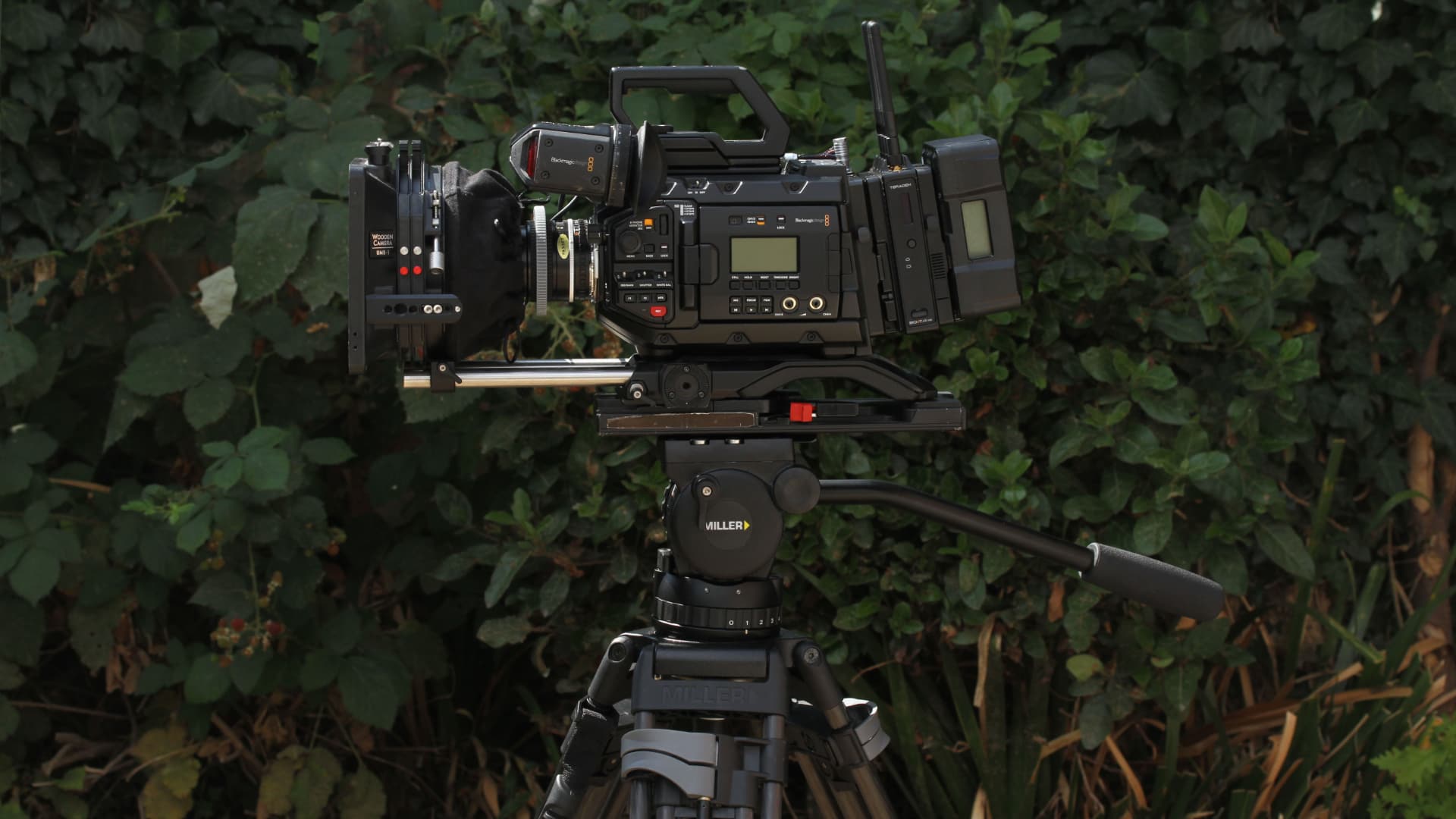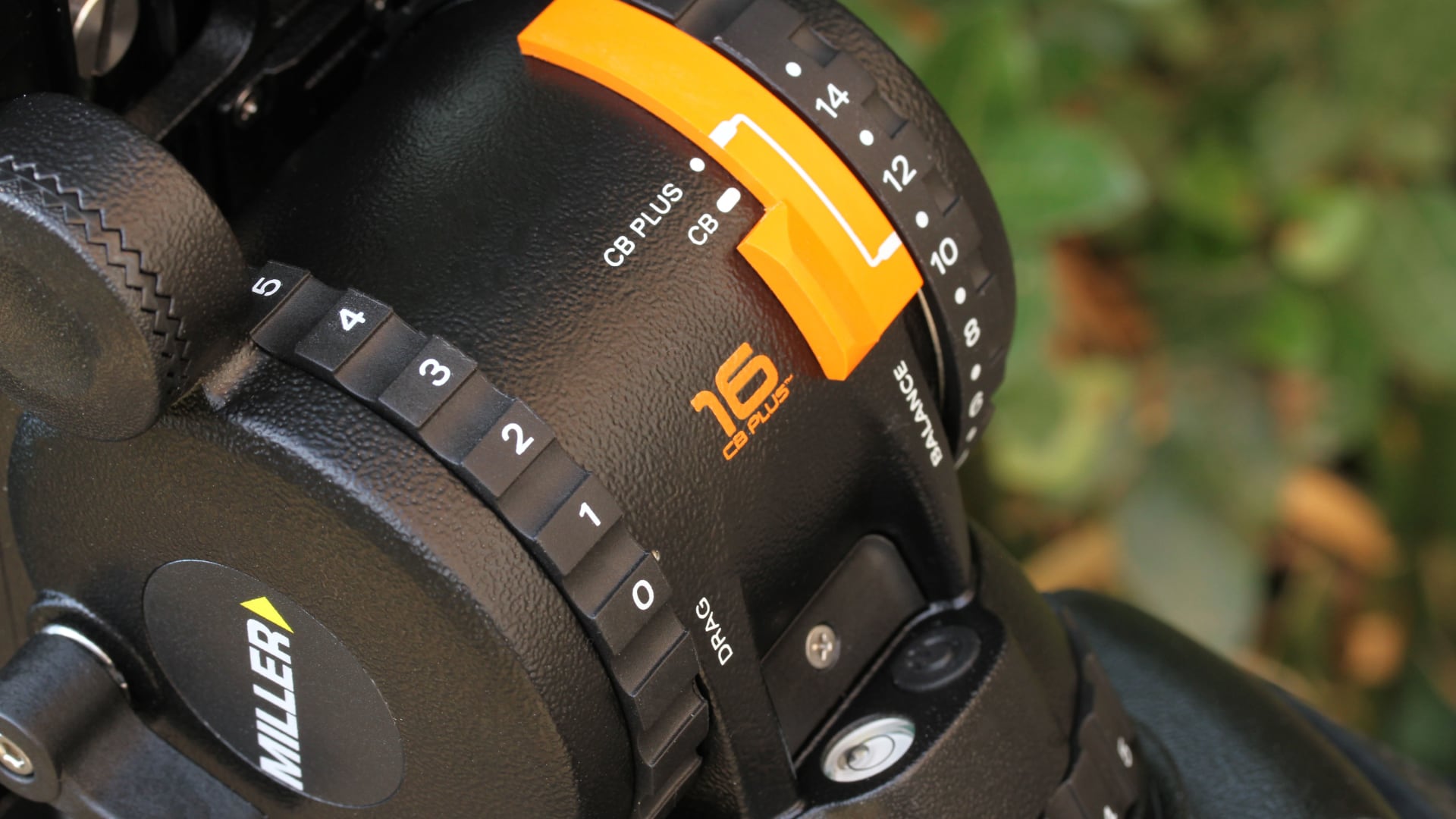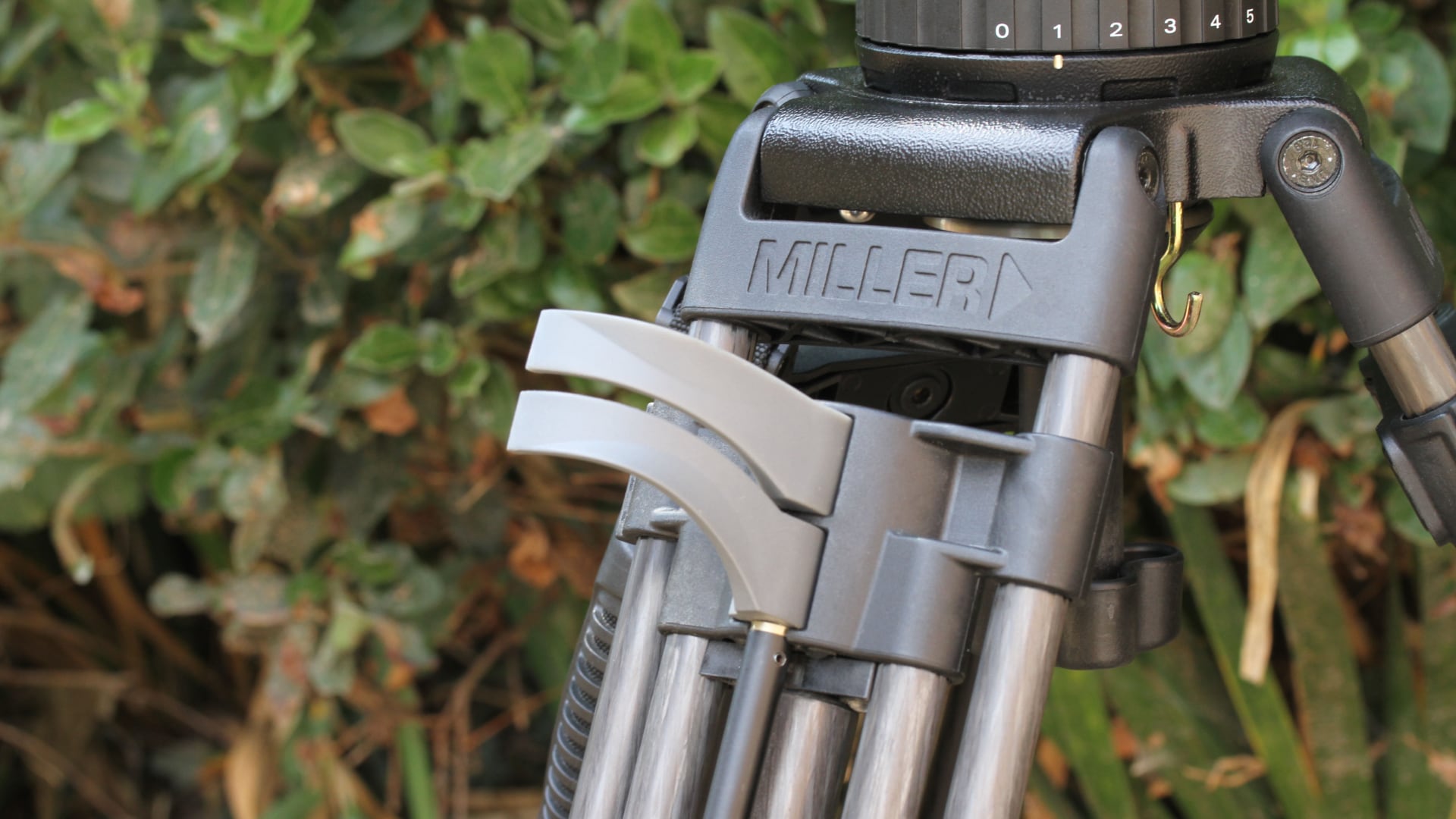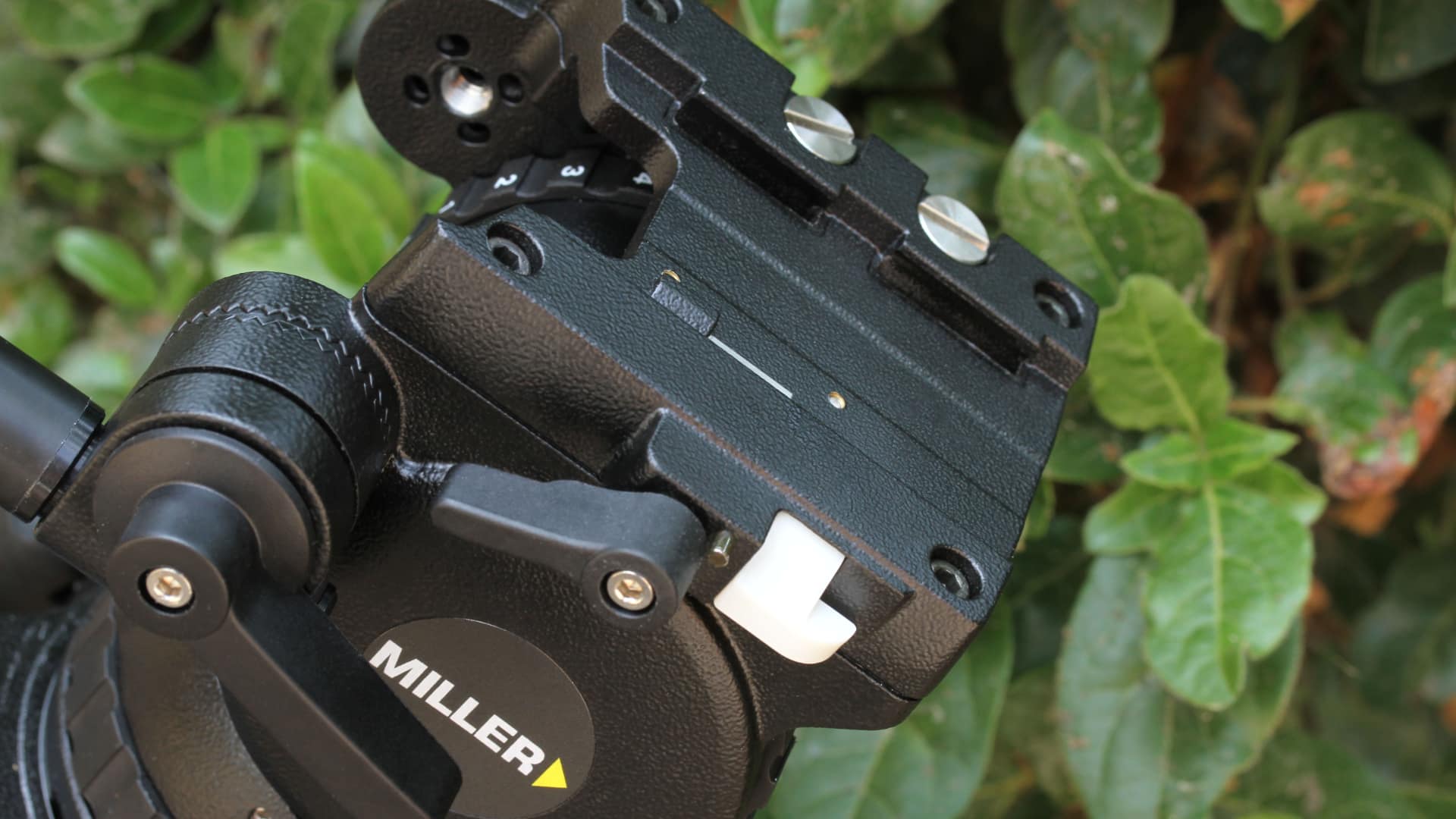
Tripods matter and are not a place to economise, so Miller’s lovely if expensive Sprinter II tripod and CX14 fluid head combo should definitely be on your radar.
The last twenty years of camera development has pulled us in two contrary directions at once. On one hand, cellphones now routinely outperform turn-of-the-century cameras. On the other, anything beyond YouTube invariably demands much bigger chips, much more resolution, and therefore bigger batteries and bigger lenses. Even quite modest modern productions can end up with bulkier gear than even high-end field productions demanded in the late 90s. With that in mind, we’re going to try to look at a wider range of grip equipment, both new ideas and established greats.
Our subject today is not one for the GoPro enthusiast. It’s very much aimed at situations which demand not only lots of nice big pixels but also radio mic receivers, video transmitters, monitors, and everything else that makes a camera heavier. Miller’s Compass series heads starts with the diminutive CX2, which handles cameras up to eight kilos, and tops out at the CX14, reviewed here, which deals with weightier rigs up to 14kg. It has carbon legs for stiffness and reduced weight, a clever drag and counterbalance system, and easy toggle latches.
Middleweight contender
Compass is Miller’s middleweight option. For context, an Alexa LF weighs nearly eight kilos body only, and one of the company’s Cineline series, which handle up to 37.5kg in the Cineline 70 model, would be a more natural fit. It’s easy to assume that upscale single-camera drama is the most demanding of sheer capacity, although as so often, outside broadcast takes the crown: the Skyline 90 can carry a 75-kilo combination of broadcast camera and box lens.
Numbers aside, experienced people will generally prefer to use a head well under its maximum weight limit, and so the CX14 will more than handle, say, an Ursa Mini Pro with a big Super-35mm zoom and all the trimmings, which might push seven or eight kilos all up. It’s probably still a bit overkill for that, but it leaves ample room for anyone who might look at an FX9 (pushing 5kg, body only) and an appropriate full-frame lens.

The 16 step counterbalance system is more or less comparable to a continuously variable type, and has greater maximum values than most
The CX14 head is a careful balance of features, sturdiness, weight and bulk. The counterbalance uses the system Miller calls CB Plus, and while it’s not continuously variable (which would be bigger, and a lot more expensive) there are fifteen levels of counterbalance force, or none at all, which in practice is not a significant compromise over a continuously-variable system. There are also five levels of fluid drag for the pan and tilt, which is enough. People who demand a higher maximum drag factor are often in situations where they really ought to be using a geared head on a long lens, but it handles that sort of situation quite nicely.
The 100mm levelling ball is great, because it’s solid, as grip equipment should be. It’s less great if you own devices which require a 75mm ball, since it’s possible to adapt a 75mm ball to 100mm socket but not vice versa. On the upside, the ball mount can be unbolted to leave a simple 3/8” threaded hole on a flat mounting surface, which is a really good thing if you’re interested in very low angles, given the alarming total height of hi-hat and levelling ball. Remove the ball, bolt the head to a baseplate and the limit is the point at which the battery hits the floor during tilts up.
With added legs

Is this as quick and easy as some of the one-point leg release systems that exist… no, but it's probably tougher
Miller supplied the CX14 head with the 2-stage Sprinter II legs, a design which puts the lever latches for both stages of the legs in the same place on each leg. No, it’s not quite as convenient as the big, single latching paddle at the top of each leg on a Vinten (Sachtler) Flowtech design, although Miller’s approach is probably less likely to suffer from grit or sand ingress and easier to fix if it does. It has a mid-level spreader, and anyone used to a ground-level one will scowl at the need to grab it by hand under at least some circumstances, as opposed to kicking it up with a spare foot, although it is probably easier to adjust this way. Rubber feet for the spikes are offered for easily-damaged or spike-proof surfaces.
If it seems like we’re being zeroing in on some very specific design features, we are, because a tripod is often someone’s single most frequently-used piece of equipment and details matter. With that in mind, things like the grab handle, which is mounted flexibly on webbing, become important. It’s great; it’s in exactly the right place.
The supplied case is a semi-hard design which seems reasonably likely to survive an airline checkin, though purists might prefer a big Pelican. It’s certainly easier to backpack around than a sufficiently-large plastic hardcase. In fact, it’s quite a nice, comfy carry; it seems bigger than some more straightforward bags, but various straps and grips are in the right place and the main zips have a different toggle so they’re easy to find by feel. The bright yellow lining seems likely to look grubby after a short while.
Not entry-level pricing
At a hair over $5500 on B&H, or £4248 plus VAT on CVP’s site, the combination of the CX14 head and Sprinter II legs is not even attempting to be an entry-level option. It’s more expensive than a Sachlter Aktiv10T, albeit with a higher rating; to get up to 16kg you’d have to buy the considerably more expensive Aktiv14T. Miller’s CX14 seems designed for owner-operation, to complement the advancement of associated equipment as time goes on, and to leave room in its very substantial die-cast head and carbon fibre legs for future upgrades. There are longer camera plates with a greater range of adjustment, or a Euro quick release, as options.

Stowage for spare screws. This is the idea of someone who's been... there
In the end, it’s the sort of thing that would happily get most freelancers through most of a career – if we start needing more than 14 kilos, we’re probably working on something that’ll rent us anything we want. Tripods, then, are not a place to economise. The only problem for the company is that this sort of thing is likely to be an intermittent investment simply because they last a long time and don’t care how many megapixels the camera has. But, no matter what we’re shooting with this week, we’re overwhelmingly likely to want a to operate nice smooth shots.
Tags: Production


Comments